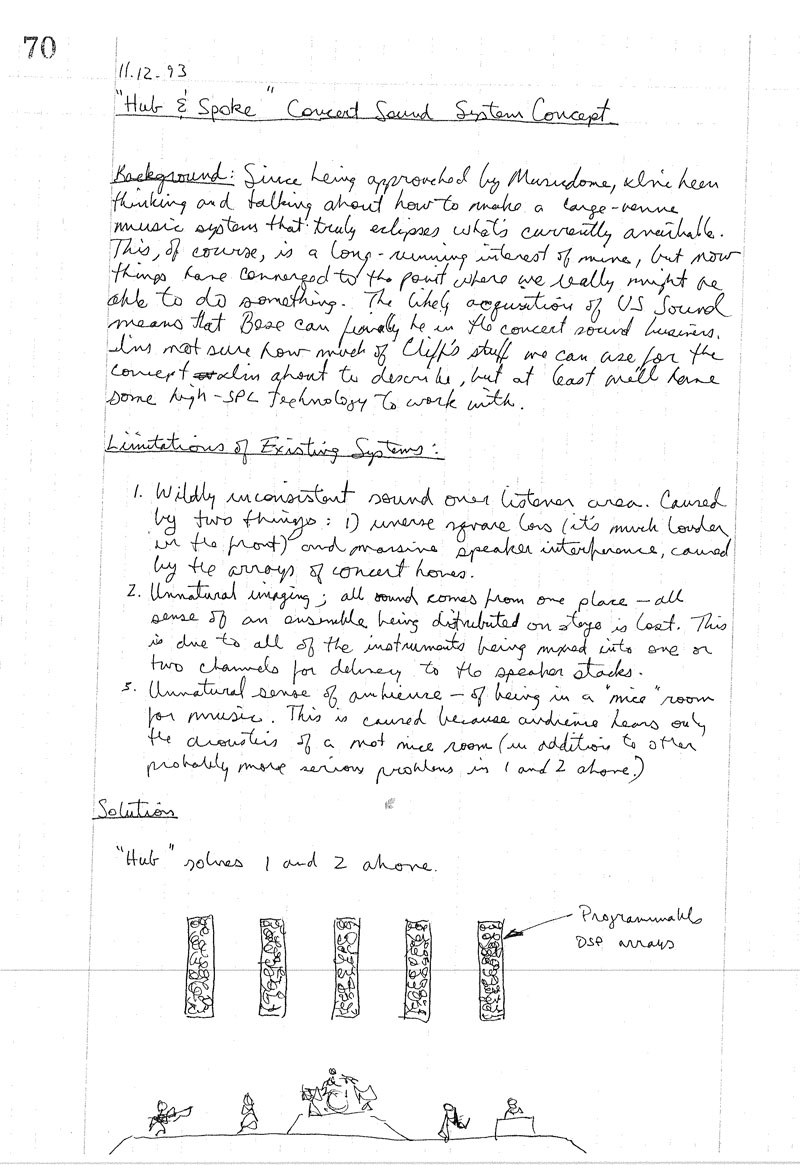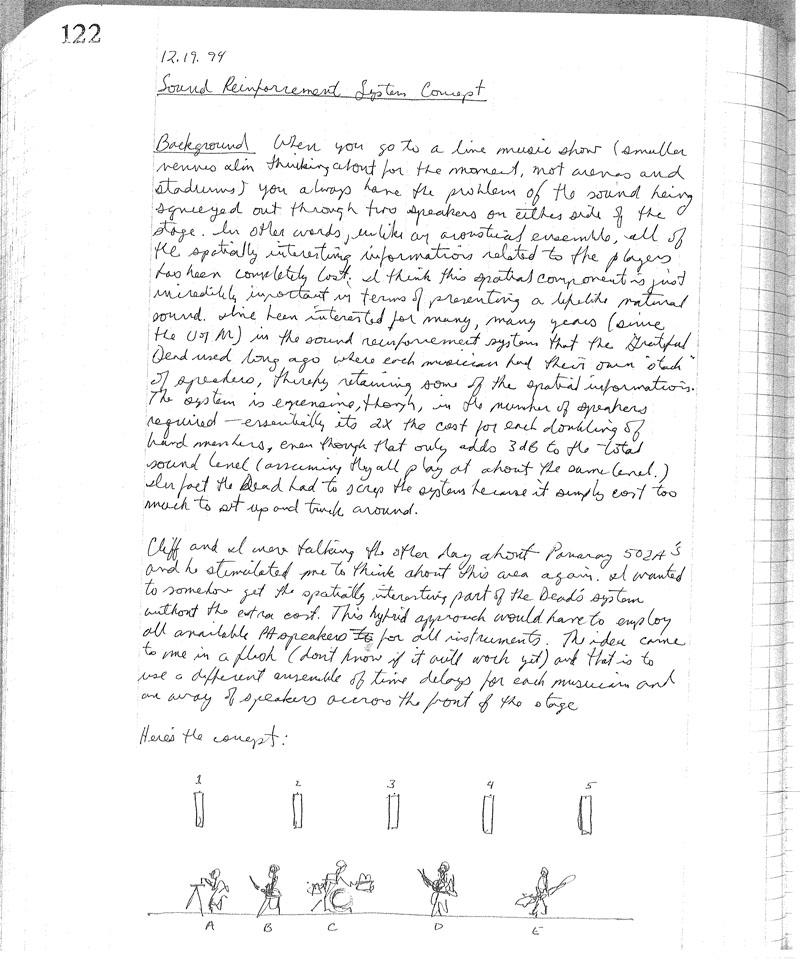Difference between revisions of "Earliest Activities"
(First edition) |
(No difference)
|
Revision as of 16:28, 2 January 2009
Cliff Henricksen and Ken Jacob created the L1 concept together.
Cliff came to work at Bose by selling his company, US Sound, to Bose in 1993. It all had to do with high-output speakers used in Rock n Roll systems for professional sports in arenas and stadiums. The designs still exist at Bose and are called "Panaray LT".
Cliff's partners went their separate ways and he became a Senior Engineer in the Acoustics Research division of Bose. Ken was in charge of the department at the time.
So, literally, on his very first day of work in Framingham, Cliff had a organizational meeting with Ken. Ken had a lot of experience, in college and afterwards, as a "sound man" in theater and for bands. As a result, he was all over the horror of how music was amplified, what with monitors, instrument amps and PA cluttering even the smallest stages and amplifiers exceeding 1KW easily available. Plus mixers, cables, everything. It took forever to set this stuff up, a van to move it and hours to get a highly-compromised sound for everyone to play to. It was way too loud onstage and definitely in the audience, not that musicians would know this. Cliff can remember audiences cringing from sound levels and feeling helpless to do anything about it, sort of like we all got on this awful rollercoaster and the whole thing was careening in chaos, at ridiculous speeds that it was never intended for. Not a real pleasant memory, but one that doesn’t need to be re-experienced. And so, Cliff agreed with Ken, knowing full well what a pain it is to play out with a band and suspecting why live music was in such a bad state of health (customers driven away by poor quality and too much quantity of it).
"Why is this?" was Ken’s question in our first meeting. Cliff's reply was "hmm, let me think about it". They agreed to meet once a week and talk about this, with Cliff doing some digging and thinking and concluding and reporting. Before too long, we began to realize the extent of the profound chasm that had been inadvertently created between the audiences and the musical artists. There was way way too much gear on most stages and we easily saw three totally separate and totally conflicting systems being used by most bands; the “triple amplification system”. This all came out of its effective use in big concerts. Unfortunately, musicians everywhere, even in little wedding bands, started using it, just like their musical heroes playing in hockey arenas. It was like using an atomic bomb to get rid of ground-hogs in your garden. It works, but it kills everything around. Not only that, but musicians had, again inadvertently, lost their engagement with their audiences. They couldn’t tell what the audiences were getting from their artistic efforts and they couldn’t do much about it. Someone else had their hands on the controls.
Cliff's suggestions for a possible technological solution to this epidemic in music-land came from recent industry vibrations about the special qualities of line arrays and from the brave experiments by the Grateful Dead, putting the whole sound system, made up partially by bass and guitar line arrays and a large central vocal system. The latter made so much sense; putting the system behind the band so they could hear it. The Dead used a canceling microphone system too, to reduce feedback in large-audience shows. Ken and I knew it was imperfect, but the idea of a system the band could use and hear and control was the inspiration. Cliff's suggestion was using line arrays that were very small in width and above head-level in height. This would give very wide horizontal acoustical radiation and an array-high vertical pattern. It would also give a very gradual change in level with distance from the array. I decided that one system per player would probably work, although at first I thought that horizontal waveguides would be necessary to direct the sound, and so would control by an audience-situated mix engineer. Boy, was that ever wrong on both counts. He wrote an early document to Ken in September of 1995 during our ongoing search for something that would work for most players.
You can view it: Historic Document Showing L1® Invention for First Time
In preparation for the 5th Anniversary of L1® Launch, Ken was going through his engineering notebooks from the time period that Cliff joined Bose (1993), and he found the first entry that mentions Cliff.
The entry must have been just before the deal with US Sound was finalized, because the entry is also from November of 1993.
What's really interesting is the idea that Cliff and Ken were already thinking about a system that would preserve the natural spatial presentation of unamplified performances.
You can also see how inspired Ken was by the Dead's Wall of Sound because it partly did this (the vocals were all summed to a central cluster, something he wanted to avoid.)
He also found another notebook entry, from just a few weeks later.
Here, it's even more clear that Cliff and Ken are working on "the problem" together. Ken believes this is clearly after the "first meeting" that Cliff has always recalled so vividly.
This is the earliest document that has been found that shows a system for musicians playing in the smaller to medium sized venues that dominate musical performances around the world.
Cliff also found some documents when he was moving his office a few weeks ago, documents that were lost.

